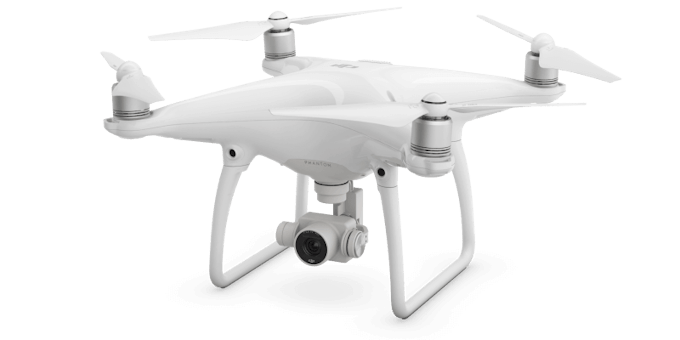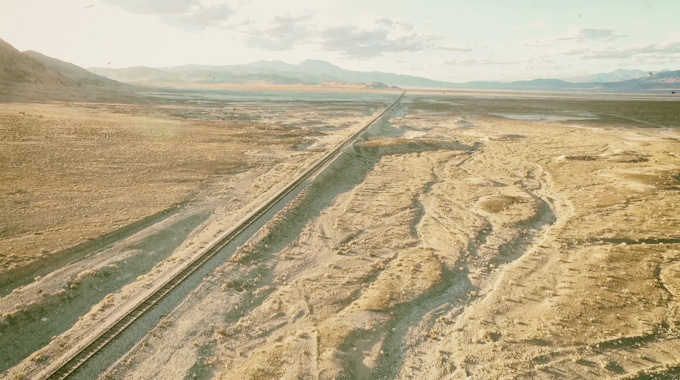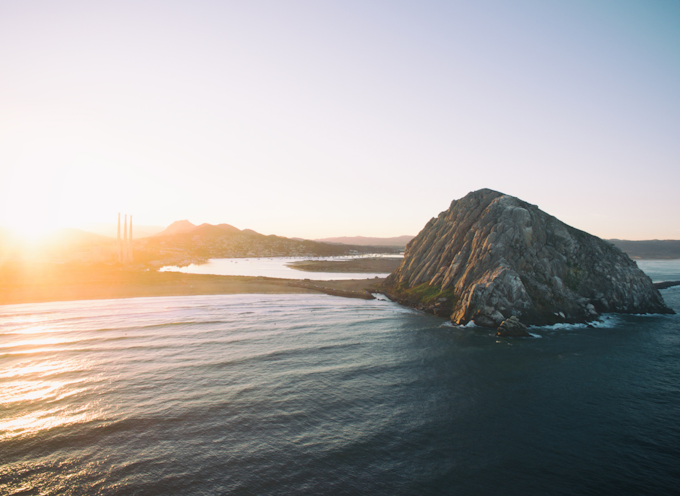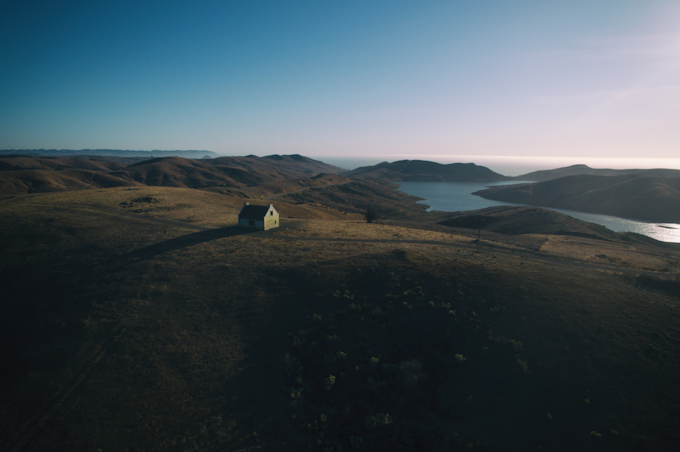Drone Photography 101
If you haven’t noticed, drone photography is here in a big way. In this guide I’ll clear up some misconceptions and offer my advice.
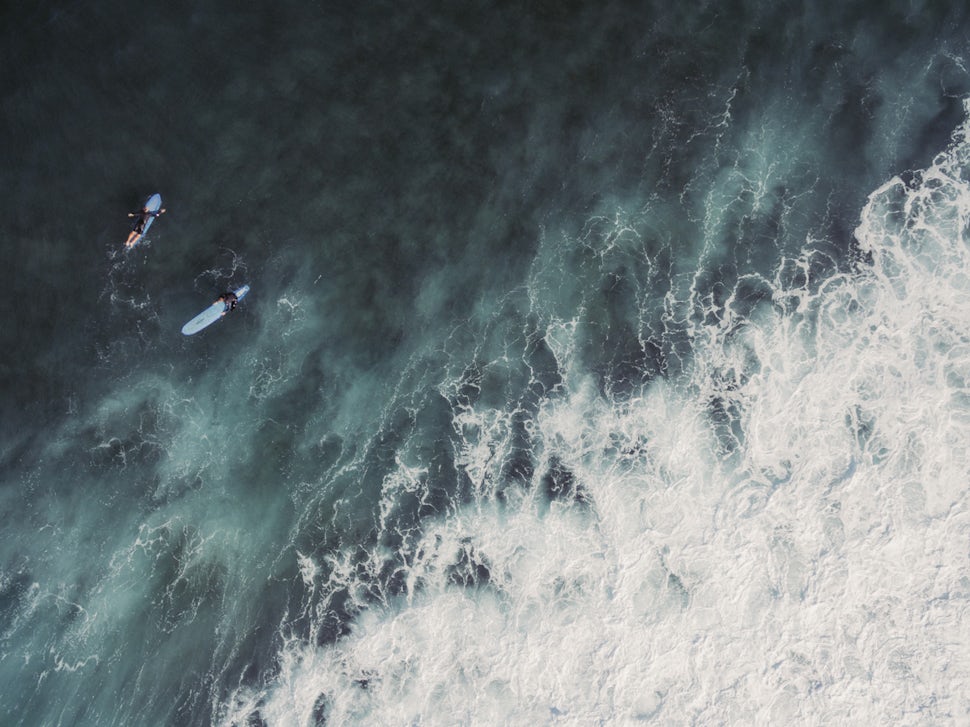
Equipment
I’m going to lead with the best piece of advice I can give. Start small. Even if you just got a brand new Phantom, leave it in the box and pick up a small cheap drone to practice with.
You will crash your drone. That’s a given. Whether its user error (probably) or an electronic issue with your drone, it’s coming down. That’s why it’s important for you to learn the basics of flying on a small, cheap drone before stepping up to a larger model. Learning to fly a drone without GPS will make you a better pilot. You’ll also appreciate flying with aids when you have them.
For the cheap drone you can get any you want, it really doesn’t matter. They all fly the same and have similar controls. Here are two that are highly rated on Amazon. Here and here.
When you’re finally ready to step up to a dedicated camera drone, there’s one brand to look at first, DJI. They make the fantastic Phantom line which ranges from the $400 Phantom 3 Standard to the $1,500 Phantom 4 Pro.
If you’re just starting out and looking to take some cool drone shots, then the Phantom 3 Standard is the way to go. If you’re upgrading or want to shoot in 4K right from the start, I’d recommend the the Phantom 4. It has an obstacle avoidance system that will stop itself mid air if you’re going to hit something.
Another option, if you have a GoPro, is the 3DR Solo ($400). It allows you to mount the GoPro on the drone and a lot of the same features as the Phantom.
Flying
It’s almost impossible to give you a flight lessons with text, so here’s a video that covers the basics and I’ll jump into the finer points below.
Fly within your limits
It’s tempting on your first flight to take off and fly over downtown. You’ll be better off though, by going to a park or field and learning the limitations of your skill and the drone. The GPS stabilized drones like the Phantom are extremely easy to fly, but also easy to get over confident with. Don’t be this guy: Drinking Played Role in White House Drone Crash.
Respect The Rules
The FAA requires operators of unmanned aircraft weighing more than 0.55 pounds (250 grams) on takeoff, and operating outdoors, be registered at www.faa.gov/uas/registration. If you are under age 13, you must have a parent or someone age 13 or older register for you.
Additional state or local requirements may apply. Check your local jurisdiction. The following websites may help you make informed decisions about how regulations impact you: www.knowbeforeyoufly.org andwww.modelaircraft.org.
Photos/Video
ISO
My advice is to always shoot with the lowest possible ISO. The Image sensors on most drones are on the small side and the image gets very noisy at higher ISOs.
RAW Is Key
The camera on the Phantom is very good, but it has it’s limitations. Shooting in RAW, if your drone allows, will give you the flexibility to adjust exposure and color. If you shoot in JPEG the images are mostly finalized.
White Balance
When shooting video, it’s important to set your white balance before you start rolling. If you leave it on auto you’ll notice color shifts as you fly.
ND
I use neutral density (ND) filters when shooting video. Most drones have a fixed aperture, so you’re only controlling the exposure with ISO and shutter speed. In order to get a cinematic look for your shots you should double the frames-per-second that you are shooting with.
So, if you are shooting video at 24fps that means that you should try to shoot at 1/50 second shutter speed (There isn’t a 1/48th option). To achieve a slow shutter speed on a bright day you’ll need to use an ND filter to reduce the light coming into the camera.
Plan Your Shot Before Launching
Even the best drones will only do 25 minutes of flight time. It’s important to mentally walk through your shots before you take off. Know your starting and ending point, how you want to frame your subject and mentally run through the stick controls. You don’t want to put the drone in the air and then figure out what you want to shoot. You’ll never get a shot off.
Watch and Learn
One of the best ways to learn new shots or techniques is to watch someone do it. There are a lot of great YouTube videos that are sure to give you some inspiration. Here a a few of my favorites:
How to use Point of Interest (PoI) | DJI PHANTOM 3 + 4
Drone Flying Tips - 5 Skills Beginner Pilots Should Master
10 Tips How to Film with a Drone
Practice, Practice, Practice!
Practice makes perfect. Every time I fly I learn something new. I had my first crash landing last week when the battery malfunctioned. Luckily, I had flown enough to know not to freak out and to look for an emergency landing area when I was flying out. If it was my first flight I would have lost the drone into the ocean, but I took my time to get comfortable with it.
Things to look out for.
Battery levels – Most drones will auto-land at 10% regardless of where it is. Make sure you don’t empty your battery.
Format your card – You don’t want to line up a shot only to have you SD card full. Format before you take off.
Check the props – Make sure they're on tight.
Compass – Calibrate the compass at every new location. It will keep the drone from flying off course.
Look for obstacles – Keep an eye out for power lines, tree branches or anything else you could hit while flying around.
Law/Rules – Be sure to follow the local regulations. www.knowbeforeyoufly.org
An emergency landing spot – Always keep an eye out for a spot to set the drone down if something goes wrong.
And that’s it! You should be ready to fly and grab some great shots. If you do, be sure to tag me so I can check them out. @garrettdangergraham
We want to acknowledge and thank the past, present, and future generations of all Native Nations and Indigenous Peoples whose ancestral lands we travel, explore, and play on. Always practice Leave No Trace ethics on your adventures and follow local regulations. Please explore responsibly!
Do you love the outdoors?
Yep, us too. That's why we send you the best local adventures, stories, and expert advice, right to your inbox.


